
Stewardship programs that reduce initial use of extended-spectrum antibiotics appear to influence antibiotic choice throughout hospitalization.

Stewardship programs that reduce initial use of extended-spectrum antibiotics appear to influence antibiotic choice throughout hospitalization.

Low vaccination rates did not rise sufficiently to attain "herd immunity" after a measles outbreak in a region in which it had been eliminated.

Multicenter study will measure efficacy, safety, and immunogenicity in adults 18–59 across Europe.

Jacinda Abdul-Mutakabbir, PharmD, MPH, describes the university's atmosphere, students' involvement in community-based care, and the support they receive.
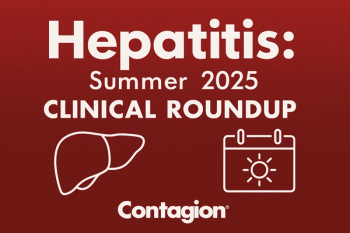
A June–September roundup spanning hepatitis research and surveillance data, FDA and ACIP policy moves, diet and diagnostics insights, and pipeline updates from screening innovations to HBV/HDV/HCV trials and approvals.

William Schaffner, MD, reviews clinical workup, treatment, and preventative measurements.
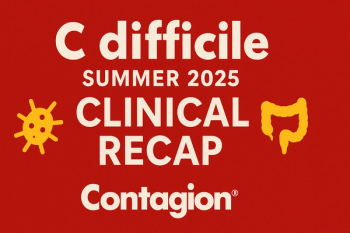
A June–September C diff roundup spanning diagnostics and stewardship debates, microbiome-based therapies and FMT optimization, prevention trials and funding, real-world outcomes, and persistent gaps in clinician practice and public awareness.
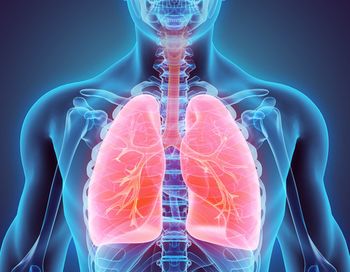
The 2025 ATS guidelines for community-acquired pneumonia update recommendations on imaging, antibiotic use, treatment duration, and corticosteroid use, emphasizing lung ultrasound as an alternative diagnostic tool, more selective empiric antibiotic prescribing, shorter courses of antibiotics for stable patients, and limited use of corticosteroids to severe inpatient cases.

This week, review of ACIP’s latest decisions, analysis links food insecurity with higher long COVID risk, and advocacy for immune-informed antibiotic development with updated susceptibility testing.

This newly approved long-acting injectable PrEP offers 6 months of HIV protection, and represents a major scientific and policy breakthrough. However, its success will depend on ensuring equitable access, enforcing coverage requirements, and maintaining a robust, multi-faceted HIV prevention infrastructure amid political and systemic challenges.

Nimish Patel, PharmD, discusses UC San Diego’s care offerings in HIV, the challenges of getting care to marginalized populations, and what the addition of lenacapavir means to individuals looking to access PrEP.

Environmental modeling shows inpatient IV therapy has the highest carbon, water, and waste footprint, while OPAT offers major reductions.

Jennifer Le, PharmD, MAS, FIDSA, FCCP, FCSHP, discusses her collaboration on this innovative work with this therapy in severely ill children.
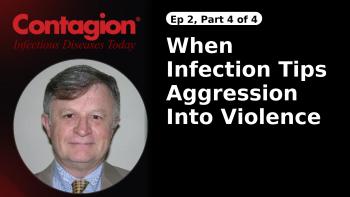
Episode 2, Part 4, Robert Bransfield, MD, connects neural circuits, inflammatory responses to infection, and impulsivity in violent behavior.

Georges C.Benjamin, MD, executive director of the American Public Health Association, details practical implications for clinical teams.

Although the number of people with knowledge about the infection rose, the results demonstrate a continued need for further education and awareness among the public.

Jennifer Le, PharmD, MAS, FIDSA, FCCP, FCSHP, talks about her work on the 2020 vancomycin guidelines for children as well as her efforts to implement Bayesian therapeutic drug monitoring for children in Vietnam.

A CDC report links the rapid growth of NDM-CRE to testing gaps and urges the prompt use of carbapenemase testing, mechanism-guided therapy, and stronger infection prevention measures.

Part 2 on coverage across payers, evidence needs for COVID-19, hepatitis B, and MMRV, and clinician messaging for maternal and newborn protection.

In our continuing conversation with Victor Nizet, MD, he discusses how his laboratory is studying how to repurpose antibiotics that susceptibility testing had shown to not be efficacious against certain infections.
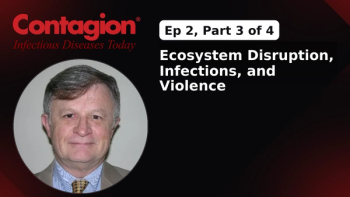
In episode 2, part 3 of 4, Robert Bransfield, MD, explains how ecological change, zoonotic infections, and neurological impairments may contribute to violent behavior.

In part 1 of our conversation, the VP of the NFID discusses ACIP’s recent meeting, including COVID-19 shared decision-making, informed-consent debates, and new policy actions on hepatitis B and MMRV.

Victor Nizet, MD, talks about some of the work his laboratory is exploring, including how they want to take a similar approach to cancer treatment when developing antibiotics as well as the need to modernize susceptibility testing to reflect treatments' true utility.

Insights from Jaya Aysola, MD, MPH, DTMH; and John C. Lin, MD candidate, on clinical workflows, social needs screening, and policy levers.

Pranita Tamma, MD, MHS, discusses recent studies comparing ceftolozane-tazobactam and ceftazidime-avibactam for drug-resistant Pseudomonas infections, emphasizing similar mortality outcomes, high rates of emerging resistance, and the importance of stewardship practices that prioritize preserving ceftazidime-avibactam for broader clinical use.

Merck’s single-dose, weight-independent antibody provides about five months of protection; EC decision pending, and it is already FDA approved in the United States.

Infectious disease pediatrician Sharon Nachman, MD, offers insights on what is already being done in clinical practice with regards to vaccines, the CDC committee's votes on the MMRV and hepatitis b vaccines, and understanding how they will affect these immunizations going forward.
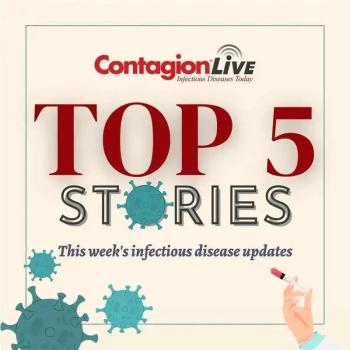
This week, OPAT for gram-negative infections expands to outpatients amid infusion complexity and stability limits, HHS and CDC add five ACIP members days before meeting, and more.
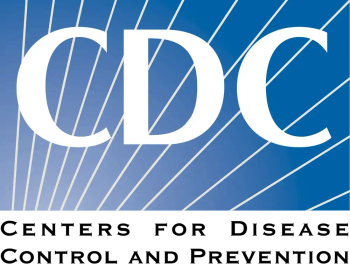
ACIP keeps broad access to COVID-19 vaccines, requests stronger informed-consent materials, and does not require prescriptions.

Victor Nizet, MD, discusses how students can thrive at the university’s Skaggs School of Pharmacy and Pharmaceutical Sciences. He discusses the school's features including its rigorous coursework, focus on research, and community-based health care opportunities.